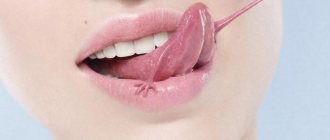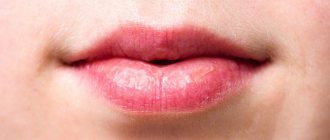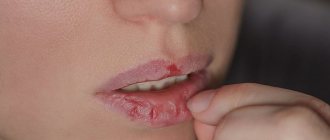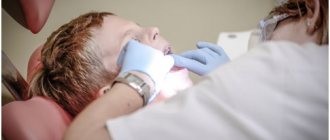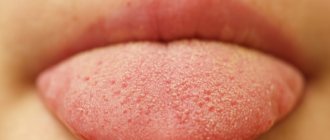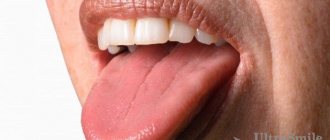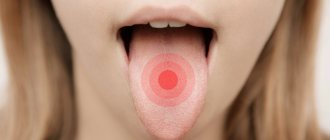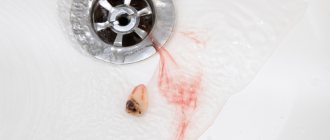At home, you can conduct a quick health diagnosis yourself. All that is necessary for this is to examine the tongue with a mirror. A change in its color and shape will tell you a lot about the functioning of internal organs. This simple method should not be neglected. With its help, you can prevent the development of dangerous pathologies in time. Some of them are indicated by a rough tongue.
Tongue is an indicator of health
It is recommended to examine the tongue in the morning, on an empty stomach. In a healthy person, its color is pale pink, and the taste buds are easily distinguishable. Normally, it has a faint whitish coating that can be easily removed with a toothbrush or a special scraper. The complete absence of such cover should be no less alarming than its excessive amount.
Any changes that occur in the oral cavity should attract a person’s attention. They may indicate the formation of pathological processes in the body. A decrease in the amount or complete cessation of saliva production leads to the development of severe dry mouth. A rough tongue will immediately signal this to a person, since due to a lack of moisture on its surface, difficulties will arise when swallowing and chewing food.
Dry tongue can occur with severe nervous excitement or stress. From a physiological point of view, this is a normal situation. As soon as the person calms down, saliva production returns to normal. If there have been no emotional upheavals, and dryness has been observed for a long time, you should look for other causes of a rough tongue. An experienced doctor will help in this situation.
The causes of dry tongue may be the following:
- dehydration and intoxication;
- heart pathologies;
- tongue burn;
- disorders of the gastrointestinal tract;
- glossitis;
- chronic tonsillitis;
- liver pathologies;
- stagnation of food;
- blood diseases;
- HIV;
- kidney problems;
- long-term use of antibiotics;
- inflammation of the salivary glands, as well as their malignant and benign tumors;
- diabetes;
- infectious lesions.
Despite the impressive list of pathologies that cause roughness and dryness of the tongue, diseases of the gastrointestinal tract, pulmonary system, and infections are most often diagnosed. Only a doctor can make a correct diagnosis after a thorough diagnosis. He will prescribe treatment that will help defeat the underlying disease. After this, the rough tongue will definitely return to normal.
Treatment of tongue spasms
But how can all this help people suffering from tongue spasms? Since dystonia greatly affects the lives of patients, many researchers are busy developing various methods of treating it. The most conservative approach is offered by speech therapy. Repeated exercises strengthen the tongue muscles, and the patient learns to properly tense and relax them when speaking and swallowing food, experts explain.
A more radical method is Botox injections. Botulinum toxin temporarily paralyzes the facial muscles, preventing spasms, but such injections must be done every two to three months when the effect of the drug wears off. Despite a number of disadvantages, this method of treating dystonia is the most effective today, clinicians note.
Treatment of dystonia involves the participation of a whole group of doctors from various specialties. The approach to treatment will depend on the nature of the symptoms that bother you, as well as on your desire to use the treatment method suggested by your doctor. Tongue spasms can cause a lot of trouble, but once the correct diagnosis is made and the appropriate treatment is chosen, patients can expect to return to normal life.
Pathologies of the digestive tract
Reflexes that can influence the motor and secretory functions of the stomach and intestines are produced by tongue receptors. The opposite effect also occurs. That is, internal organs influence the appearance of pathological reflexes on the surface of the tongue. For example, its rough root and white coating will tell the doctor that the patient suffers from gastritis with low acidity. Pain and burning sensations in the esophagus, heartburn can complement the clinical picture.
A rough tongue covered with a gray coating may indicate the development of an intestinal ulcer. An additional factor indicating this pathology is heartburn and a burning sensation in the mouth.
Colitis, in addition to roughness, is characterized by an increase in the size of the tongue; teeth marks may even remain along its edges. With duodenitis and biliary dyskinesia, the thickness of the plaque increases significantly. A slight roughness of the tongue rarely causes discomfort. But a dense coating can negatively affect the sense of taste, reducing the sensitivity of the papillae.
Diseases of the pulmonary system
A white, rough tongue occurs in patients at an early stage of the development of diseases of this organ. Inflammation in the bronchi is indicated by a thick and dry plaque located at its tip. If it begins to thicken and acquire a yellow tint, this will tell the doctor that the pathology is progressing. Additionally, the patient will experience other symptoms. For example, weakness, unpleasant odor and dry mouth.
Characteristic changes in the condition of the tongue are observed in pathologies such as scarlet fever. First, an extensive yellow or gray-white coating forms. It thickens every day. The fungiform papillae are clearly visible under the plaque. They are distinguished by a rich red color and are surrounded by a white border. After a week, the plaque disappears, and the tongue changes color to crimson.
Position of the tongue in the oral cavity
Dr. M. Mew has published a large number of videos on YouTube that talk about the importance of proper tongue position. This is a famous British scientist, founder of the orthotropics field, which studies the horizontal development of the face. He states that the tip of the average person's tongue rests on the teeth. A more correct position is when this part touches the depression in the sky. This is where the tip of a Spaniard's tongue is when he makes the soft ñ sound. Most people who try to position the tongue as described above will find the back of the tongue to be slightly lower than required.
The correct position is when the palate touches not only the tip of the tongue, but the entire back part of this organ. In this case, a force appears that is directed vertically upward. If you position your tongue correctly and try to swallow, the average person will experience a completely different, unusual sensation. In this case, two forces act on the maxilla: one directed horizontally and one directed vertically. They come from the back of the tongue and the muscles of this organ, which originate in the hyoid bone. Under the influence of these forces, the maxilla develops forward and upward, forming an attractive face.
For greater clarity, let’s give an example of moving a heavy piece of furniture. If the tongue is not positioned correctly, only one force acts on the maxilla, that is, only one person moves the furniture, with which he has serious difficulties. Touching the palate not only with the tip, but also the back of the tongue can be compared to the appearance of several pumped-up men who came to the rescue to move massive furniture.
Infectious and other diseases
There are many pathogenic fungi and bacteria in the oral cavity. Their growth is inhibited by the body's immune system. As soon as its operation fails, the infection begins its attack.
In humans, a rough tongue and a white coating on the tonsils may indicate the development of follicular or catarrhal tonsillitis. The disease is accompanied by a sore throat and fever. The causative agents of the disease are streptococci and staphylococci.
The culprit of oral thrush is the fungus Candida. A very dense white coating appears on the surface of the tongue. If you try to remove it, the mucous membrane underneath will begin to bleed. The development of this chronic pathology is observed in patients with HIV infection.
Dry tongue is accompanied by disruption of the thyroid gland. Symptoms such as sweating, loss of appetite, diarrhea, irritability and anxiety are observed.
Diabetes mellitus is characterized by the development of thirst, the patient’s tongue becomes rough and dry.
If dense white plaque is concentrated on its sides and tip, this may indicate the development of hidden renal failure. This is a very serious problem that can cause death. Therefore, if you notice such formations on your tongue, you should immediately consult a doctor.
Leukoplakia
Leukoplakia affects the mucous membranes. Often this is the reason why the tongue becomes rough. This pathology can be easily confused with thrush. A white coating also appears on the tongue, but it has clearly defined edges. Its surface is rough and dry. It is impossible to remove plaque with a spatula.
The reasons for the development of this pathology have not been fully identified. It is believed that the main role is played by provoking factors: thermal, physical and chemical irritation. Particularly dangerous is the influence of several agents at once. For example, irritation by galvanic current, which is formed as a result of the use of dissimilar metal prostheses. As well as mechanical damage to the mucous membrane from dental instruments. In smokers, leukoplakia can occur as a result of exposure to smoke and high temperatures.
Internal factors play an important role in the development of the disease. These are hormonal abnormalities, gastroenterological diseases, and lack of vitamin A. The danger of the disease is that it can gradually transform into cancer.
Diagnosis and treatment
The doctor can prescribe treatment only after he determines exactly why the tongue is rough. Sometimes the cause can be identified immediately and there is no need for numerous diagnostic procedures. But in some cases it may be necessary:
- complete blood count;
- bacteriological study of oral microflora;
- gastroscopy;
- Ultrasound;
- bronchoscopy;
- acid reflux test.
Once the underlying disease is identified, the doctor will be able to prescribe treatment for the patient. The tongue will return to normal as soon as the patient’s condition begins to improve. To eliminate dry mouth and reduce pain, the doctor additionally prescribes rinses with various antiseptics.
Diagnosis of burning in the mouth
In most cases, burning of the oral mucosa is not at all associated with diseases of the teeth and gums. Despite this, if you feel itching, you should first contact your dentist, especially if you have recently had prosthetics or fillings done.
The specialist will examine the oral cavity and, if dental problems are detected, prescribe the necessary treatment. In addition, the dentist can give recommendations on how to eliminate dry mouth, because it is the precursor to discomfort. In this case, even traditional methods will be useful.
If the dentist was unable to cure the patient, he will have to undergo a series of tests and examinations by a neurologist, gastroenterologist, otolaryngologist and endocrinologist. First of all, blood is collected and a swab is taken from the tongue. Once the original disease is identified, the patient will be prescribed the correct treatment.
Treatment with traditional methods
There are several effective traditional medicine recipes that help alleviate the patient’s condition. It is recommended to rinse a rough tongue with infusions of the following medicinal plants:
- sage;
- chamomile;
- calendula;
- Oak bark;
- mint;
- sea buckthorn.
To prepare the infusion, pour a teaspoon of the selected ingredient into a glass of boiling water and leave for several minutes. After the liquid has cooled, it is filtered and used for rinsing. You can add a drop of iodine, aloe juice or honey to the finished infusion.
In addition, you can put a cotton pad soaked in rosehip oil, propolis tincture or a mixture of carrot and potato juices on your tongue for a few minutes. This procedure will relieve pain, moisturize, soothe and disinfect the mucous membrane. After 3-5 minutes, the cotton pad should be removed and your mouth should be rinsed with warm water.
Reviews about the treatment
Patients often leave reviews about how they managed to cure a rough tongue. In some cases, therapy does not take much time. Improvement occurs quickly after using regular rinses with medicinal herbs. Lubricating the surface of the tongue with sea buckthorn oil gives good results.
In the event that dryness, plaque and roughness of the tongue are associated with the development of serious pathologies, it is not possible to manage only with antiseptic rinses. Patients often write that they have come a long way before they were given the correct diagnosis. Only after complete recovery were they able to forget about the problem of dry and rough tongue.
Causes of glossalgia
As with other somatoform neurotic disorders, the etiology of language neurosis is closely related to the influence of stress factors. This is any situation that is psychologically traumatic for a person, for example:
- conflicts in the family, serious quarrel with relatives, betrayal of a spouse, divorce;
- demotion (or lack of long-awaited career advancement), job loss;
- personal or global financial crisis, especially against the backdrop of the need to make regular loan payments;
- suffered a serious illness and fear of re-illness (relapse);
- any disaster (experienced earthquake, flood, fire, transport accident, etc.).
Persons who tend to repeatedly exaggerate the scale of existing problems are predisposed to language neurosis. Usually they lack optimism, do not like fun, do not like to joke themselves, and avoid noisy companies for fear of appearing funny. They are very demanding of others and are afraid of losing control of the situation. Therefore, in families where one or both parents have signs of a neurotic syndrome, the unquestioning authority of the father or mother usually “reigns”, children suffer from overprotection.
